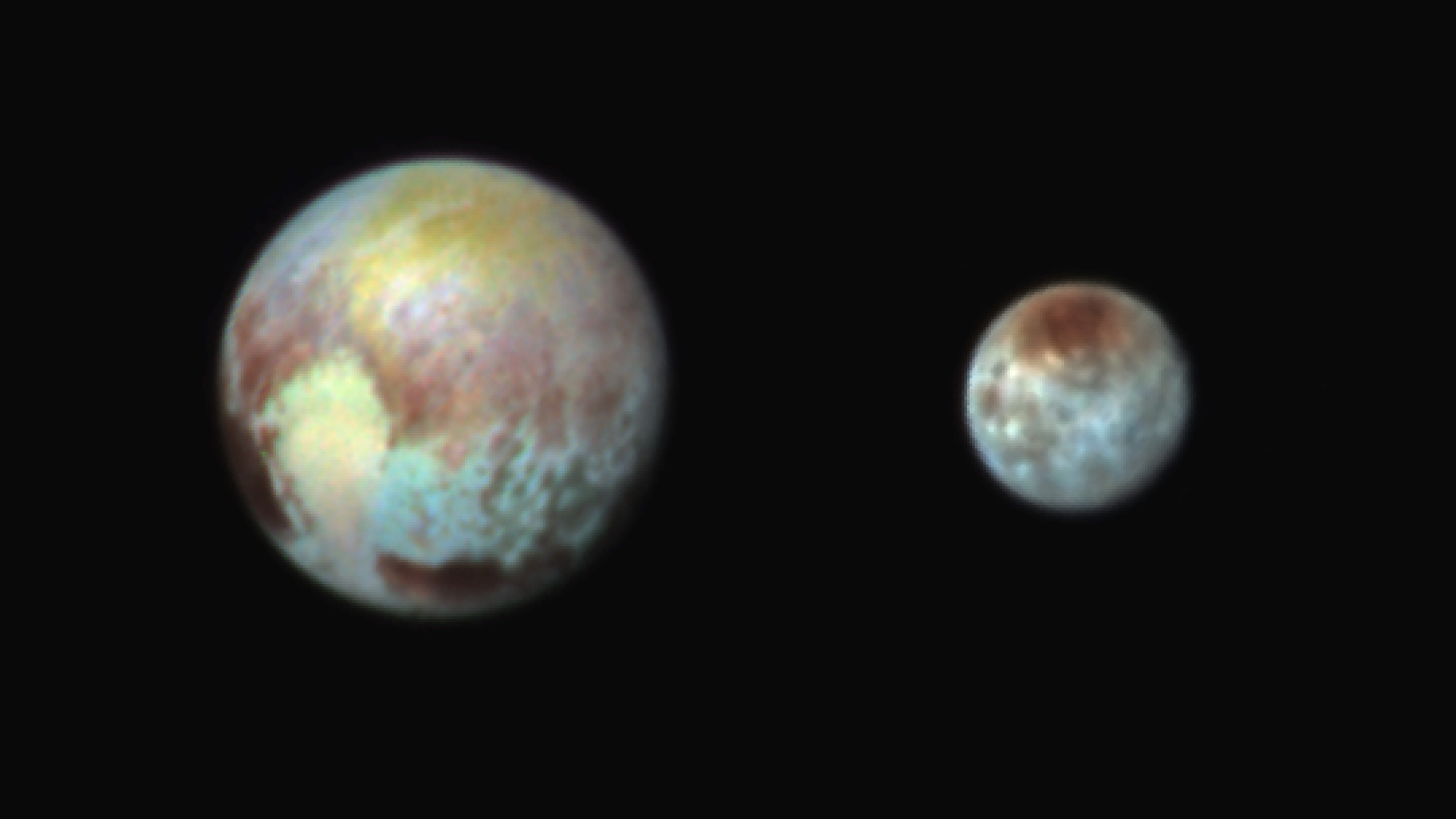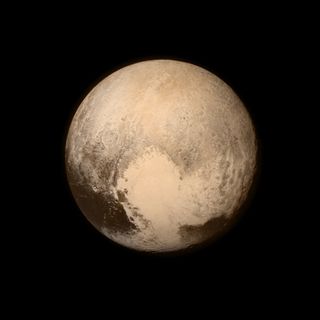Pluto, Big Moon Charon Blaze in New Technicolor Images

Flamboyant yellows, purples, blues and greens cover the surfaces of Pluto and its largest moon, Charon, in new images from NASA's New Horizons space probe.
The surfaces of Pluto and Charon don't actually look like the inside of a kaleidoscope; if you saw them with your naked eye, they'd appear much more monochromatic. But the new false-color images reveal the identity of various chemicals across the surfaces of the two bodies, and can help scientists uncover the history of this far-out family of objects, researchers said.
"These images show that Pluto and Charon are truly complex worlds. There's a whole lot going on here," New Horizons co-investigator Will Grundy, a scientist at Lowell Observatory in Flagstaff, Arizona, said in a statement. "Our surface-composition team is working as fast as we can to identify the substances in different regions on Pluto and unravel the processes that put them where they are." [New Horizons Probe's July 14 Pluto Flyby: Complete Coverage]
The flamboyant new photos were captured using three color filters on New Horizons' Ralph imaging instrument. They were taken on Monday (July 13) before the probe went quiet, as planned, in preparation for its close flyby of Pluto at 7:49 a.m. EDT (1149 GMT) today (July 14).
Looking at false-color images such as these can help scientists determine the molecular makeup of ices and determine the age of geologic features (such as craters), NASA officials said. Such analyses could also reveal changes that have occurred on the surface of the two bodies due to space weather.
"We make these color images to highlight the variety of surface environments present in the Pluto system," Dennis Reuter, co-investigator with the New Horizons Composition Team, said in the same statement. "They show us in an intuitive way that there is much still to learn from the data coming down."

One of the most striking Pluto features revealed by New Horizons is a 1,000-mile-long (1,600 kilometers) bright region shaped like a heart. The new false-color images reveal that the heart, which looks monochrome in other pictures, consists of two regions with different colors.
Get the Space.com Newsletter
Breaking space news, the latest updates on rocket launches, skywatching events and more!
Charon's surface has been full of surprises so far; it contains chasms and craters, and a dark north-polar region. In the new false-color photos, the dark pole appears red, which is attributed to "hydrocarbon and other molecules, a class of chemical compounds called tholins," according to NASA. "The mottled colors at lower latitudes point to the diversity of terrains on Charon."
The New Horizons probe will send back not only stunning new images of the Pluto system, but also incredible scientific data about the dwarf planet's atmosphere, surface composition, geologic activity, size and more. The false-color pictures show hhow the instruments onboard the probe can provide insight into the nature of these mysterious members of the solar system, mission team members said.
Follow Calla Cofield @callacofield. Follow us @Spacedotcom, Facebook and Google+. Original article on Space.com.
Join our Space Forums to keep talking space on the latest missions, night sky and more! And if you have a news tip, correction or comment, let us know at: community@space.com.

Calla Cofield joined Space.com's crew in October 2014. She enjoys writing about black holes, exploding stars, ripples in space-time, science in comic books, and all the mysteries of the cosmos. Prior to joining Space.com Calla worked as a freelance writer, with her work appearing in APS News, Symmetry magazine, Scientific American, Nature News, Physics World, and others. From 2010 to 2014 she was a producer for The Physics Central Podcast. Previously, Calla worked at the American Museum of Natural History in New York City (hands down the best office building ever) and SLAC National Accelerator Laboratory in California. Calla studied physics at the University of Massachusetts, Amherst and is originally from Sandy, Utah. In 2018, Calla left Space.com to join NASA's Jet Propulsion Laboratory media team where she oversees astronomy, physics, exoplanets and the Cold Atom Lab mission. She has been underground at three of the largest particle accelerators in the world and would really like to know what the heck dark matter is. Contact Calla via: E-Mail – Twitter